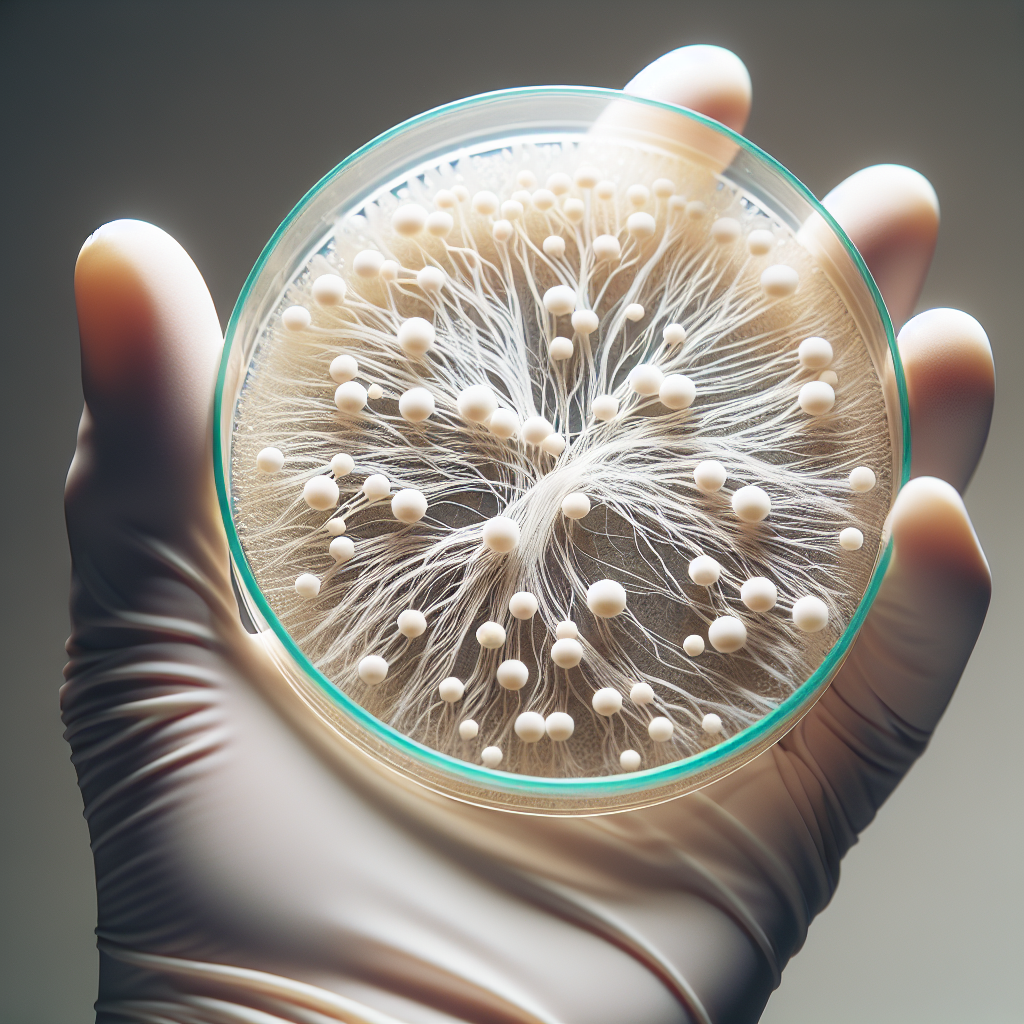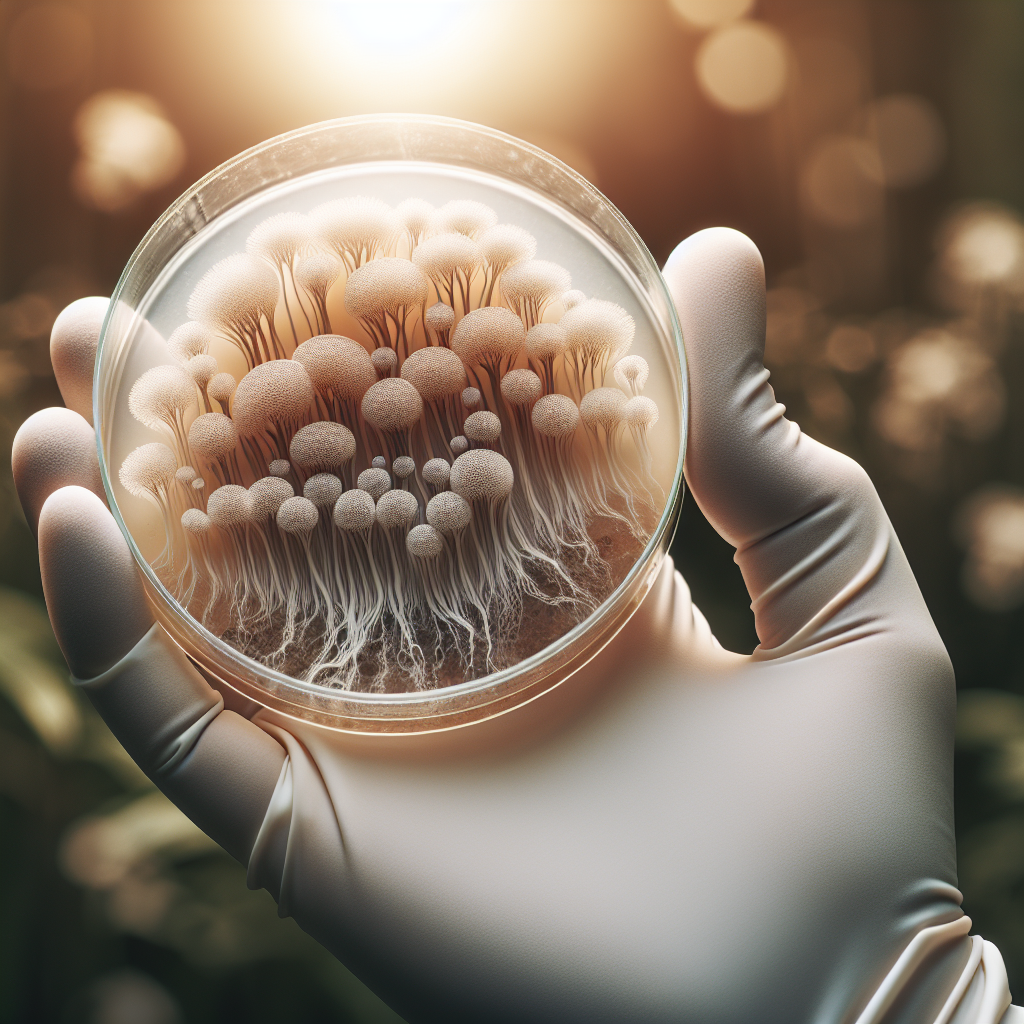In the realm of mushroom cultivation, a key step in promoting vigorous mycelium growth is understanding and mastering the preparation of the agar medium. This insightful article titled “Mastering the Agar Recipe for Mycelium Growth” walks you through the detailed process of creating the perfect nutrient-rich substrate that stimulates mycelium propagation. It provides you with practical tips, potential troubleshooting methods, and the sophisticated know-how to cultivate mycelium efficiently, effectively transforming your humble beginnings into a thriving mushroom garden.
Understanding Mycelium and Agar
Mushroom cultivation and the study of fungi predominantly revolve around the understanding of mycelium and agar. Both are fundamental elements to the growth and development of a multitude of fungi species.
Definition of Mycelium
Mycelium is the vegetative part of a fungus, consisting of a network of fine white filaments known as hyphae. It is the underground and unseen powerhouse of the fungus. The mycelium is responsible for absorbing nutrients from its surrounding environment to support the growth and development of the fungus.
Roles of Mycelium in Fungi Growth
The mycelium plays several critical roles in fungi growth. It is responsible for creating the primary structure of the fungus organism. This structure is essential for the absorption and transportation of nutrients, which support the growth of the entire fungus. Apart from providing nourishment to the fungus, the mycelium also plays a role in reproduction. It produces spores, which contribute to the propagation of the fungus.
Understanding the Role of Agar in Mycelium Growth
agar plays an essential role in facilitating mycelium growth. It provides a nutrient-rich medium that supports the expansion and development of the mycelial network. In addition to supplying nutrients, agar also provides a stable physical structure for the mycelium, enabling it to anchor and spread.
Why Agar is Preferred for Mycelium Cultivation
Agar is the preferred medium for mycelium cultivation because it offers several advantages. Firstly, agar’s consistency and physical properties are particularly conducive to mycelium growth. Secondly, it has the ability to be sterilized, minimizing the risk of contamination. Lastly, agar can be easily modified with additives, allowing for the customization of the nutrient profile to cater to specific mycelium needs.
Types of Agar for Mycelium Growth
PDA (Potato Dextrose Agar)
PDA is a common type of agar utilized in mycelium cultivation. The main components of this agar are potato infusion and dextrose. The potato infusion provides a rich source of vitamins and nutrients, while the dextrose serves as an important carbohydrate source for the mycelium.
MEA (Malt Extract Agar)
Malt Extract Agar, or MEA, is another common choice for cultivating mycelium. It consists primarily of malt extract, which provides an extensive spectrum of nutrients beneficial for mycelium growth. Occasionally, other elements such as yeast extract or glucose may be added to enhance the nutrient profile of the agar.
Yeast Extract Agar
Yeast Extract Agar is also used for mycelium growth. As the name suggests, the main component of this agar is yeast extract, a rich source of vitamins and minerals. Yeast Extract Agar is particularly effective for cultivating yeast-like fungi.
Comparing Different Types of Agar
Different types of agar provide a variety of nutrient profiles meant to support the growth of specific types of mycelium. While all have their advantages, the choice of agar depends mainly on the type of mycelium you wish to cultivate. Factors for consideration include nutrient and consistency preferences of the mycelium, along with the cost and availability of components.

Basic Ingredients for Agar Recipe
Agar Powder
Agar powder is the foundation of any agar recipe. Derived from seaweed, it dissolves in hot water and solidifies at room temperature, creating a gel-like substance perfect for mycelium cultivation.
Nutrient Source
The nutrient source can vary depending on the type of mycelium you’re cultivating. Common sources include potato dextrose for PDA, malt extract for MEA, and yeast extract for Yeast Extract Agar.
Distilled Water
Distilled water is preferred over tap water to avoid introducing contaminants into the agar solution.
Optional Additives
While the main components of an agar recipe are agar powder, a nutrient source, and water, additional ingredients such as minerals, carbohydrates, and vitamins may be added to enhance the nutrient profile.
Preparing Agar Solution for Mycelium Growth
Step-by-Step Process of Agar Preparation
The first step in preparing an agar solution is to dissolve the agar powder and the nutrient source in distilled water. Once these ingredients are fully dissolved, the solution is then autoclaved or pressure cooked at a specific temperature for a defined amount of time to sterilize it.
How to Sterilize the Agar Solution
Pressure cooking or autoclaving is a common method for sterilizing the agar solution. This process ensures the elimination of any unwanted bacteria or microorganisms that could compete with the mycelium for nutrients or introduce contamination.
Cooling and Pouring the Agar Solution
Once sterilized, immediately remove the agar solution from heat, allowing it to cool but not solidify. Pour into sterile petri dishes. The pouring should be done in a sterile environment to minimize the risk of contamination.

Inoculating Agar Plates with Mycelium
Choosing the Source of Mycelium
Choosing the correct source of mycelium is important for successful cultivation. This source could be a piece of colonized agar from an earlier culture, a bit of fresh mushroom tissue, or spores from a spore print or syringe.
Sterilization Process Before Inoculation
Before inoculation, ensure that all tools and surfaces are sterilized. This can be achieved through the use of a pressure cooker or autoclave, alcohol, and heat from a flame.
Steps for Successful Inoculation
Inoculating the agar plates involves transferring the selected mycelium source to the cooled agar dish. Ensure this is done in a clean environment with sterilized tools to avoid contamination.
Post-inoculation Care and Precautions
Following inoculation, it’s crucial to provide the right environmental conditions for mycelium growth. This includes a dark, cool environment with approximate room temperature.
Monitoring and Maintaining Mycelium Growth
Ideal Conditions for Mycelium Growth
Mycelium prefers growing in cool, dark, and humid conditions. It’s important to offer these conditions for optimal growth.
How to Monitor the Growth Progress
Monitor the growth closely. Check periodically for signs of healthy growth, like expanding white patches of mycelium and an absence of other colors indicating potential contamination.
Potential Problems and Solutions
Be aware of potential issues such as contamination, dehydration, or slow growth. Each issue should be addressed promptly. For example, contaminated plates should be discarded, while dehydration can be combated by increasing ambient humidity.
When and How to Harvest Mycelium
Each type of mycelium will have different maturation times. Once matured, mycelium can be harvested using a sterilized tool and then transferred to a substrate for fruiting or stored under refrigeration.
Common Mistakes in Mycelium Cultivation
Incorrectly Prepared Agar Solution
Using the wrong quantities or not properly sterilizing the agar solution can lead to issues in growth or contamination.
Improper Handling of Mycelium and Agar
Handling mycelium and agar without sterilizing tools and surfaces can introduce contaminants inhibiting fungi growth.
Insufficient Monitoring of Growth Process
Frequent monitoring is essential to identify potential problems at their onset and mitigate damage.
Not Taking Precautions Against Contamination
Neglecting to take adequate precautions against contamination, such as deficient sterilization or poor hygiene practices, can hinder fungal growth.
Agar Recipe Variations for Specific Fungi
Adjustments for Different Types of Fungi
Different fungi have different needs. Customizing the agar recipe to fit these needs can provide a significant advantage in growth and development.
Benefits of Customizing Agar Recipes
A customized agar recipe can provide optimal nutrients and conditions, leading to a potentially healthier and faster-growing mycelium.
Examples of Agar Recipe Variations
You might add extra dextrose for carbohydrate-loving mycelium, or introduce specific vitamins or minerals needed for a certain species.
Benefits and Limitations of Agar Method
Advantages of Using Agar for Mycelium Growth
Using agar allows for control over the nutrients, provides a stable structure for growth, enables easy contamination troubleshooting, and allows for mycelium preservation and genetic isolation.
Limitations and Challenges of Using Agar
Despite its benefits, agar has its limitations. It can be a complex process, costly, and is vulnerable to contamination if not handled properly.
Possible Alternatives to Agar
Alternatives to agar include liquid cultures, grain spawns, or wood-based substrates, offering an easier or more cost-effective solution for certain fungi.
Advanced Techniques for Optimizing Mycelium Growth
Enhancing Nutrient Profile of Agar Solution
Through careful analysis and experimentation, you can optimize the nutrient profile of the agar solution, potentially leading to faster and more robust mycelium growth.
Techniques for Faster Mycelium Colonization
Strategies such as fractionating the mycelium, maintaining an optimal temperature, and providing ample oxygen can speed up mycelium colonization.
Maintaining Genetic Diversity of Mycelium
Preserving genetic diversity is important for ensuring robust and resilient mycelium. This can be achieved through a regular rotation of mycelium sources.
Uses of Mycelium in Industry and Research
Mycelium finds numerous applications in sectors such as food, medicine, and the environment. Understanding and optimizing mycelium growth broaden the scope of these applications and potential revolutionary breakthroughs in the field.
